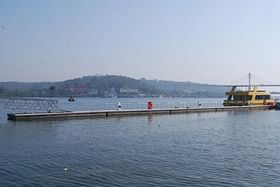With the aim of boosting tourism economy, the Centre has approved eight floating jetty projects in Tamil Nadu and Karnataka under Sagarmala programme.
The Ministry of Ports, Shipping, and Waterways, under its Sagarmala programme, has pushed a number of reforms and initiatives in the maritime industry to strengthen the country’s socio-economic and regulatory environment.
One of the key initiatives of the Ministry is to promote and develop a unique and innovative concept of floating jetties ecosystem which when compared to traditional fixed jetties, offers a number of advantages, such as being environment friendly, having a longer shelf life and modular construction.
Under the ambit of Sagarmala, the Ministry has provided approval to four additional projects, taking the total to 11 floating jetty projects in Karnataka.
These projects are located primarily on Gurupura River and Netravati River and shall be used for tourism purposes. The other locations are Thannir Bhavi Church, Bangra Kuluru, Kulur Bridge and Jeppinamogaru NH bridge.
The Ministry has provided in-principle approval to four floating jetty projects in Tamil Nadu.
The projects at Agni Theertham and Villoondi Theertham are located in Rameshwaram which is a renowned spiritual place in India. Additionally, the projects located at Cuddalore and Kanyakumari cater to tourists at these distinguished tourist destinations.
These projects will assist in offering safer, hassle free transportation to the tourists and will lead to overall development and upliftment of the coastal community.
Commenting on the initiatives, Union Minister of Ports, Shipping and Waterways Sarbananda Sonowal said “Our PM lays high emphasis on providing strong connectivity, which is essential for building a developed India, the installation of these jetties will be a big push for socio economic development of these regions in Karnataka and Tamil Nadu and create new avenues for water related tourism and regional trade with more employment opportunities to the local population”.


